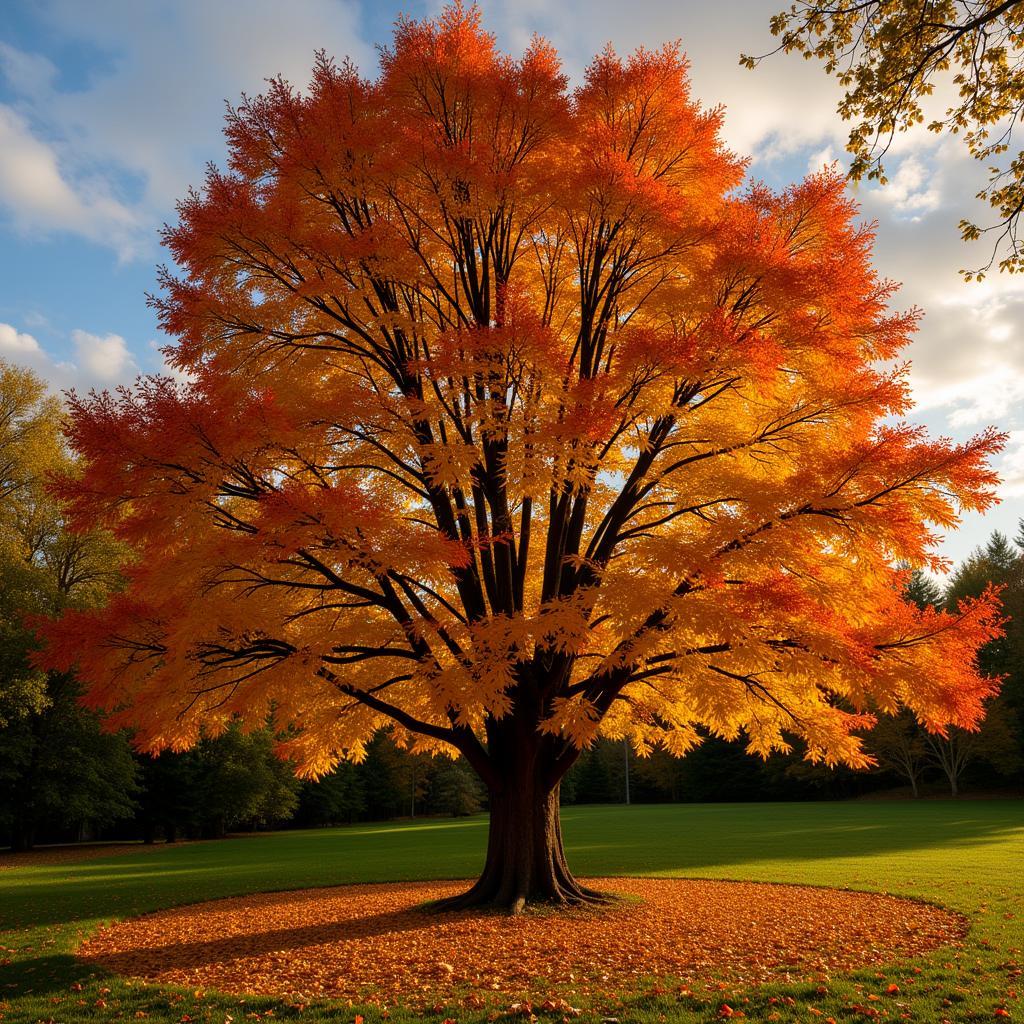The horse chestnut tree, with its majestic stature and iconic conker seeds, adds a touch of grandeur to any landscape. If you’re considering buying a horse chestnut tree for your property, this guide provides valuable insights to help you make an informed decision.
Understanding Horse Chestnut Trees
Before you buy a horse chestnut tree, it’s essential to understand their characteristics and requirements.
What is a Horse Chestnut Tree?
The horse chestnut tree (Aesculus hippocastanum) is a deciduous tree native to southeastern Europe. It’s known for its:
- Size: Mature trees can reach heights of 50-75 feet, with a similar spread.
- Leaves: Large, palmately compound leaves with 5-7 leaflets.
- Flowers: Showy, upright panicles of white flowers with a reddish blotch.
- Fruits: Spiky, green capsules containing 1-3 shiny, brown conkers (seeds).
Benefits of Horse Chestnut Trees
- Ornamental Value: Their stately appearance, beautiful flowers, and unique fruits make them a striking addition to landscapes.
- Shade: Their dense canopy provides ample shade during hot summers.
- Wildlife Habitat: The flowers attract pollinators, and the seeds provide food for some wildlife.
Factors to Consider Before You Buy a Horse Chestnut Tree
Climate and Growing Conditions
Horse chestnut trees thrive in climates with cool summers and cold winters. They prefer:
- Sunlight: Full sun to partial shade.
- Soil: Deep, fertile, well-drained soil.
- Moisture: Moderate moisture; tolerant of some drought once established.
Space Requirements
Consider the mature size of the tree and ensure you have ample space for it to grow without obstruction from structures or other trees.
Potential Problems
- Leaf Miner: This insect pest can cause premature browning of leaves.
- Bleeding Canker: A bacterial disease that can be fatal to trees.
- Horse Chestnut Scale: Small insects that suck sap from the leaves and branches.
 Horse Chestnut Tree Flowers Close Up
Horse Chestnut Tree Flowers Close Up
Where to Buy a Horse Chestnut Tree
- Local Nurseries: Offer expert advice and a selection of locally adapted trees.
- Online Retailers: Convenient but research reputable sellers with healthy stock.
Choosing the Right Horse Chestnut Tree
- Size and Age: Consider the size of your space and how long you’re willing to wait for the tree to mature.
- Health: Inspect trees for signs of pests, diseases, or damage.
- Root System: Choose trees with a well-developed root system.
Planting and Caring for Your Horse Chestnut Tree
Planting
- Timing: Plant in fall after leaf drop or early spring before bud break.
- Location: Choose a well-drained site with ample space.
- Planting Hole: Dig a hole twice as wide as the root ball and as deep.
- Backfilling: Use native soil amended with compost.
- Watering: Water deeply after planting and regularly during the first growing season.
Care
- Fertilization: Fertilize in spring with a balanced fertilizer.
- Pruning: Prune in late winter to remove dead, diseased, or crossing branches.
- Watering: Water during prolonged drought.
- Pest and Disease Control: Monitor for pests and diseases and treat accordingly.
FAQs about Buying Horse Chestnut Trees
1. Are horse chestnuts edible?
No, horse chestnuts are toxic to humans and many animals. They should not be confused with edible sweet chestnuts.
2. How fast do horse chestnut trees grow?
Horse chestnut trees grow at a moderate rate, adding 1-2 feet in height per year.
3. Can I grow a horse chestnut tree from seed?
Yes, you can grow horse chestnut trees from seed (conkers), but it requires patience as they can take several years to germinate and grow.
4. Do horse chestnut trees need a lot of water?
Horse chestnut trees prefer moist soil but are relatively drought-tolerant once established. Water deeply during prolonged dry periods.
5. When do horse chestnut trees bloom?
Horse chestnut trees typically bloom in spring, producing showy panicles of white flowers.
 Horse Chestnut Tree with Vibrant Autumn Foliage
Horse Chestnut Tree with Vibrant Autumn Foliage
Conclusion
Buying a horse chestnut tree can be a rewarding investment, adding beauty and shade to your landscape for generations to come. By understanding their needs and providing proper care, you can enjoy the majestic presence of these magnificent trees. For personalized advice and expert assistance, reach out to Justus Horses USA at 0772127271 or [email protected]. Our team is dedicated to providing exceptional customer service and helping you make informed decisions about your equine and landscaping needs. Visit our location at QGM2+WX2, Vị Trung, Vị Thuỷ, Hậu Giang, Việt Nam for a personalized consultation.